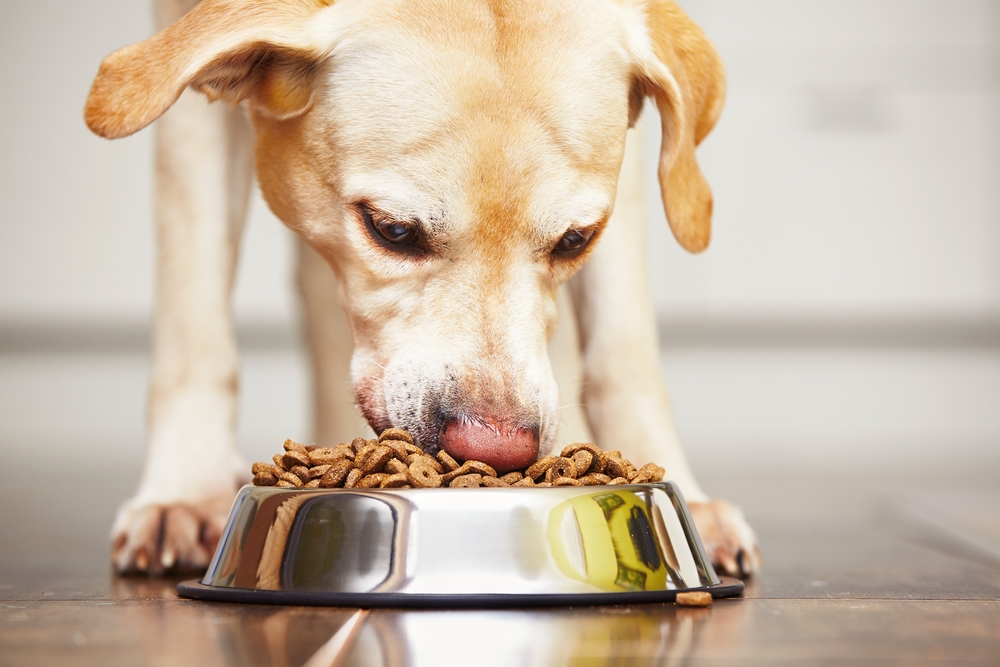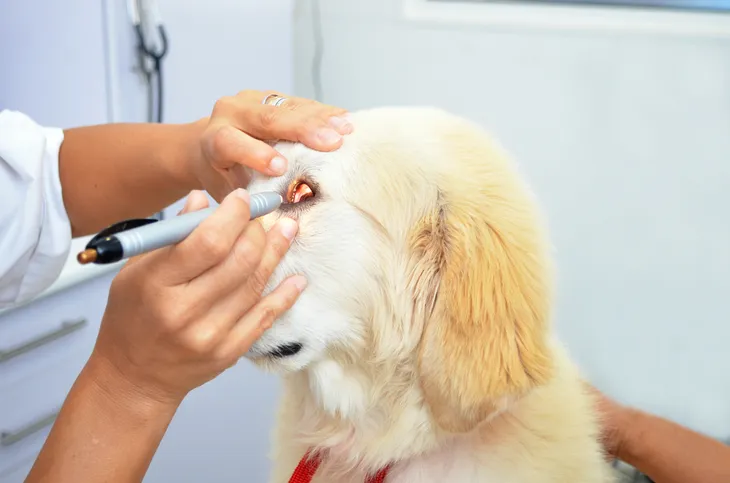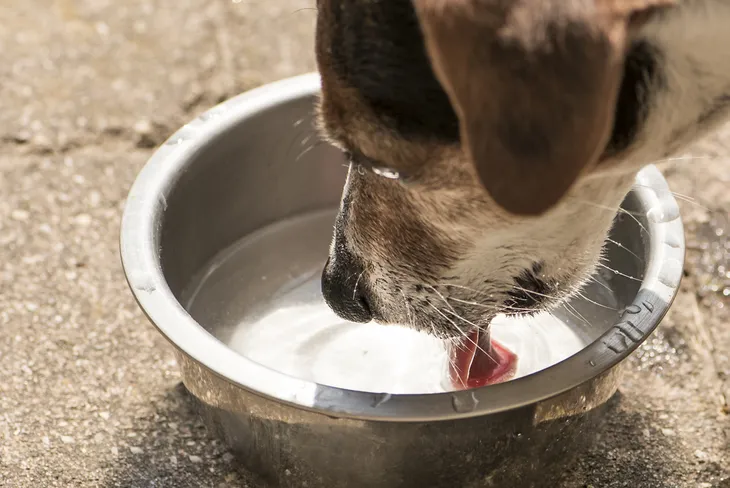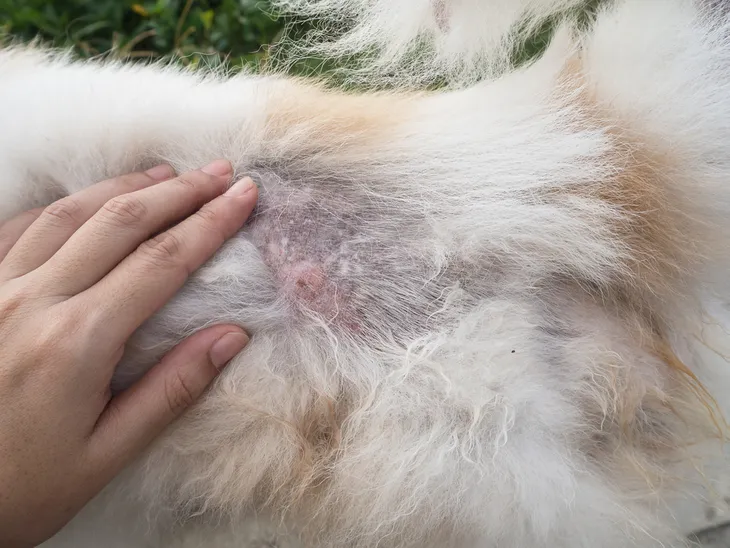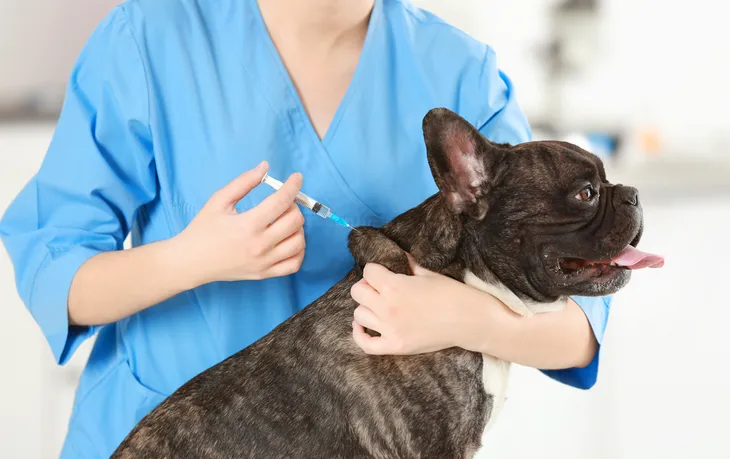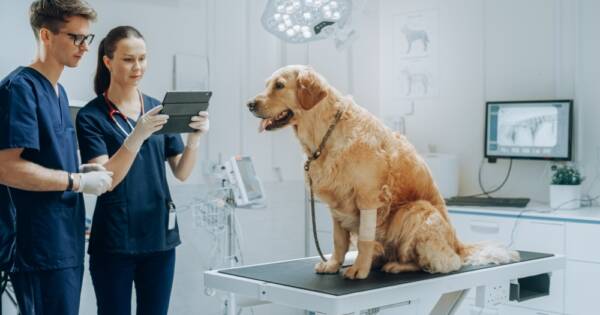Dogs can get diabetes, just as people can. Diabetes in dogs takes two main forms, and the first and most common is canine mellitus, or “sugar diabetes.” As in humans, sugar diabetes in dogs can be of the type 1 or type 2 variety. The other form is diabetes insipidus, commonly called “water diabetes” or “drinking diabetes.” It is a rare disorder, marked by the animal’s inability to regulate its own water content.
Recognize the Symptoms of Diabetes in Dogs
In dogs, sugar diabetes and water diabetes present with different symptoms, most of which are non-specific. This can make recognizing the condition difficult, so be sure to consult a veterinarian if you notice any of these telltale signs (note: treatment options are listed after the 6 symptoms below):
Sugar Diabetes Symptoms: Urinary Abnormalities
In dogs, sugar diabetes usually has a slow, gradual onset marked by a steady intensification of symptoms. One of the earliest symptoms is changes in your dog’s urinary habits. Your pet may urinate more often than usual, and it may excrete an unusually large volume of urine when it relieves itself. These urinary abnormalities frequently coincide with a noticeable spike in the amount of water your dog drinks, and a housebroken pet may also begin to have accidents inside your home.
Sugar Diabetes Symptoms: Weight-Related Signs
Both of the insulin-related forms of canine diabetes result from the dog’s inability to regulate its own blood-sugar levels. Because their blood sugar is not properly controlled, dogs with diabetes may lose weight despite eating as much as usual, or even more than usual. Similarly, a dog that experiences a significant increase in appetite but does not gain weight should be examined by your veterinarian.
It is important to note that while these symptoms could indicate diabetes, they may be related to another condition, or unrelated to any health problem altogether.
Sugar Diabetes Symptoms: Urinary Tract and Bladder Infections
Canine diabetes results in excessive sugar levels in your pet’s bloodstream, as sugar is not properly absorbed by its body. Your dog will excrete this sugar when it urinates. This, in turn, can lead to infections, since bacteria can feed on the sugar in the urine and may end up invading your pet’s urinary tract or bladder.
Frequent urination, urination accompanied by pain, foul-smelling urine, and blood in the urine can all indicate possible urinary tract and bladder infections.
Sugar Diabetes Symptoms: Glaucoma
In more advanced cases of undiagnosed or uncontrolled canine diabetes, your dog may experience a buildup of pressure in its eyes. This condition is known as glaucoma, and it is also observed in human patients with diabetic conditions.
Serious cases of glaucoma in dogs can result in the temporary or permanent loss of vision in one or both eyes. In extreme situations, your dog may need to have one or both of its eyes removed, as this may be the only way to relieve the dangerous buildup of pressure.
Water Diabetes Symptoms: Urinary Abnormalities
Dogs with water diabetes typically display urinary symptoms including increased frequency of urination and increased urine volume. Urine will be dull and diluted, due to its excessively high water content. Your dog may also display increased thirst, and will drink much more water than usual. Alternately, the dog might become dehydrated, and urinate with reduced frequency.
Many cases of canine water diabetes are related to the lack of an important hormone known as the antidiuretic hormone (ADH). This hormone impedes urine flow, and when it is present only in low levels, water passes too easily through your dog’s body and is excreted in its urine.
Water Diabetes Symptoms: Fur Loss
Dogs with water diabetes may display a significant loss of fur. Look for excessive shedding that is not related to the normal cycle of seasonal hair loss. Most dogs, especially breeds with longer and thicker coats, will begin to shed their thicker winter fur in the spring months, as summer approaches. This is a natural way to help your dog stay cool in hot weather.
If shedding is taking place during cold-weather times of year and is accompanied by changes in urinary behavior, water diabetes may be the cause.
How to Treat Diabetes in Dogs
As in humans, diabetes in dogs cannot be cured, but it can be controlled. Most cases of canine diabetes can be stabilized, and will not adversely affect your pet’s quality of life.
Sugar Diabetes Treatment: Insulin Therapy
Insulin therapy is a frontline treatment of canine mellitus, just as it is in humans. You will have to administer insulin after each of your pet’s meals, and it is given as a subcutaneous injection. While you may be nervous about giving your dog an insulin shot at first, you will become adept at it over time. Your vet will teach you how to properly administer insulin when you visit to establish your pet’s treatment plan.
Sugar Diabetes Treatment: Weight Management
Diabetic dogs need to maintain healthy body weights, as weight maintenance helps your pet regulate its own blood sugar levels. Exercise is also an effective natural way of helping your dog stabilize its condition, so be sure to take your dog for a walk every day. Ideally, you should go to an off-leash park and engage in active play with your dog to ensure it is getting enough aerobic activity. This will also lead to general health improvements, which will in turn boost your pet’s overall prognosis.
Sugar Diabetes Treatment: Dietary Changes
In some cases, your vet may recommend that you make changes to your dog’s eating habits and dietary routine. You may have to replace regular dog food with a high-fiber alternative that is also lower in simple carbohydrates, as this will help prevent excessive amounts of sugar from entering your pet’s bloodstream. These specially formulated foods for diabetic dogs are readily available through pet retailers, though they typically cost a little more than regular dog food.
Sugar Diabetes Treatment: Spaying
If you have a female dog that has not been spayed and your pet is diagnosed with Type 1 or Type 2 canine mellitus, your vet will likely recommend that you have your dog spayed. This is because spaying normalizes the levels of progesterone, a hormone, in your dog’s bloodstream. Progesterone is known to interfere with insulin’s mechanism of action, so neutralizing its adverse effects is an important step in helping bring the diabetic condition under control.
Water Diabetes Treatment: Modified Water Deprivation Testing
Your dog will probably be temporarily hospitalized if your vet suspects that it has water diabetes. During your pet’s hospital stay, it will undergo an examination known as modified water deprivation testing, which will determine whether or not your dog is passing too much water through its body. In some cases, this procedure can be performed on an outpatient basis, with your dog undergoing a simplified version of the test. However, results may be less conclusive.
Water Diabetes Treatment: Management
Dogs with water diabetes can become dangerously dehydrated very quickly, resulting in potentially life-threatening levels of thirst. It is very important that plentiful amounts of drinking water remain available to your dog at all times, especially if the pet is on its own for prolonged periods during the day.
Some researchers believe that canine water diabetes is related to head trauma. In some cases, the condition goes away on its own when underlying head injuries heal, so condition management may only be a temporary necessity.
